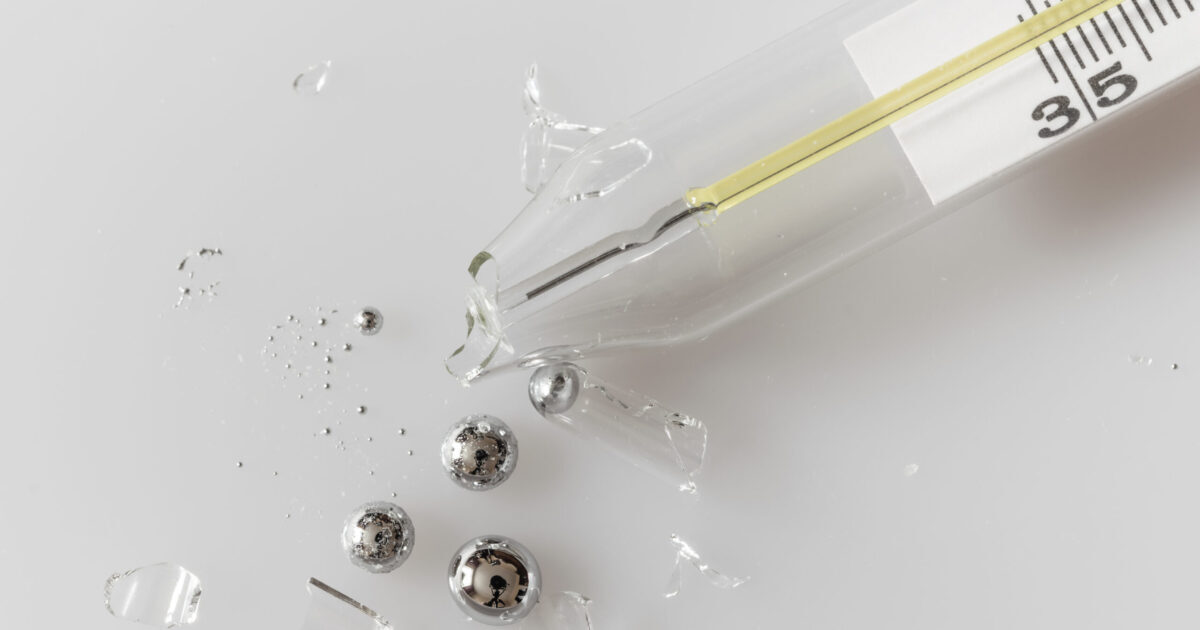Information provided by Forest County Potawatomi Community Water and Sewer Department.
Q: I am worried about mercury in my home. Where should I look for potential sources of mercury?
A: Many common household items can release mercury when they are improperly disposed of, broken or mishandled. Some of the most common household sources of mercury are described below.
- Thermometers- those used for fevers, candy, deep frying, ovens indoors and outdoors with silvery temperature indicators may contain mercury.
- Barometers and manometers- many barometers and vacuum gauges found in machinery contain mercury.
- Thermostats- mercury containing tilt switches have been used in thermostat for more than 40 years. Each switch contains approximately 3 grams of mercury.
- Lighting and electrical applications- fluorescent lamps and high intensity discharge lamps commonly are found in garages and home workshop areas. Spent lamps must be managed properly because they contain mercury.
- Major appliances- mercury containing thermostat probes may be found in several types of gas fired appliances that have pilot lights, including ranges, ovens, clothes dryers, water heaters, furnaces and space heater. Although non-mercury thermostat probes also are used in these appliances, threat all probes as though they contain mercury, unless you know they do not.
- Pharmaceuticals and pesticides – mercury can be found in some topical disinfectants, such as mercurochrome, tincture of merthiolate and older medications for psoriasis and eczema. Mercury also has been used as fungicide in pesticides and older paints.
Other sources of mercury in homes
- Weight/counterweight in grandfather clocks
- Jewelry with a glass ampoule containing mercury
- Elemental mercury saved from an industrial application, laboratory or prior activity
- Many button batteries, in particular from older hearing aids
- Lights in some older model children’s tennis shoes
- Old batteries of any type(pre- 1990)
- Irons with tilt safety switches
- Automotive trunk light switches, high intensity headlights, anti-lock braking systems
- Some gas flow meters
- Some latex paints manufactured before 1992 (to prevent mildew)
- Old chemistry sets and toys
- Home blood pressure gauges
- Azogue capsules, which are gel capsules filled with liquid mercury, often sold in botanicas (Latino herb and spiritual shops), used in espiritismo, Santeria and folk medicine practices
More information can be found at:
https://cdphe.state.co.us/HM/mercury/mercinthehome.pdf
More information on compact fluorescent lamps can be found at:
https://dnr.wisconsin.gov/topic/Recycling/bulbs.html
Q. Are the household products listen above dangerous?
A. Most people come in contact with mercury by eating fish and from spills of small amounts of metallic mercury, such as from a broken thermometer. Even small spills or amounts of mercury, such as that found in thermometers or fluorescent bulbs, can cause high levels of mercury vapors that are unsafe to breathe. You should respond immediately to all mercury spills.
More information can be found at:
https://www.dhs.wisconsin.gov/mercury/index.htm
https://www.dhs.wisconsin.gov/mercury/health.htm
Breathing mercury vapor is very dangerous – much more dangerous than swallowing it. This is because inhaled mercury vapor is almost completely absorbed by the body. Mercury vapor is heavier than air and tends to settle to the floor. This puts children at increased risk, because they are closer to the ground and are more likely to breather mercury vapor that has settled.
Q. Is there anything I can do to reduce the amount of mercury in my home?
A. Whenever possible choose to buy and use products that are mercury-free. Many mercury-free alternatives are readily available.
| Mercury Containing Product | Mercury-Free alternative |
| Latex Paint manufactured before 1992 | Use latex paint manufactured after 1992 |
| Thermometers | Replace with digital or red alcohol thermometers |
| Thermostats | Replace with a digital thermostat; this has the added benefit of allowing you to program your thermostat to automatically adjust the temperature at night and when you aren’t home |
| Batteries | Replace with alkaline batteries or batteries that are easily recycled (rechargeable nickel-cadmium, long lasting lithium) |
| Fluorescent lamps | Replace with lamps that are labeled as low mercury lamps; these can be recognized by their green endcaps or green printing on the bulb |
| Antiseptics | Mercury-free alternatives include Neosporin and mycin. Talk to your pharmacist about other alternatives |
More information can be found at:
https://www.epa.gov/mercury/mercury-your-environment-steps-you-can-take
https://cdphe.state.co.us/HM/mercury/mercinthehome.pdf
Q. How do I clean up small mercury spills at home?
A. Please follow the clean up recommendations at the below links:
https://www.epa.gov/cfl/cleaning-broken-cfl
https://www.epa.gov/mercury/what-do-if-mercury-thermometer-breaks
https://www.atsdr.cdc.gov/mercury/docs/11-229617C-508_Cleanup_Residential.pdf
https://www.dhs.wisconsin.gov/mercury/resources.htm
Q. How can families reduce the risk of exposure to mercury at home?
A. There are a number of things families can do to reduce the risk of exposure to mercury:
- Eat mainly types of fish and shellfish low in mercury
- Limit your consumption of types of fish that typically have higher levels of mercury
- Choose to buy and use products that are mercury-free
- Be careful handling containers and products that contain mercury
More information can be found at:
https://www.epa.gov/mercury/mercury-your-environment-steps-you-can-take
If more information please contact Jenny Spencer, Water and Sewer Manager for the Forest County Potawatomi Community Utility Department at 715-478-7398 or jspencer@fcpotawatomi-nsn.gov




